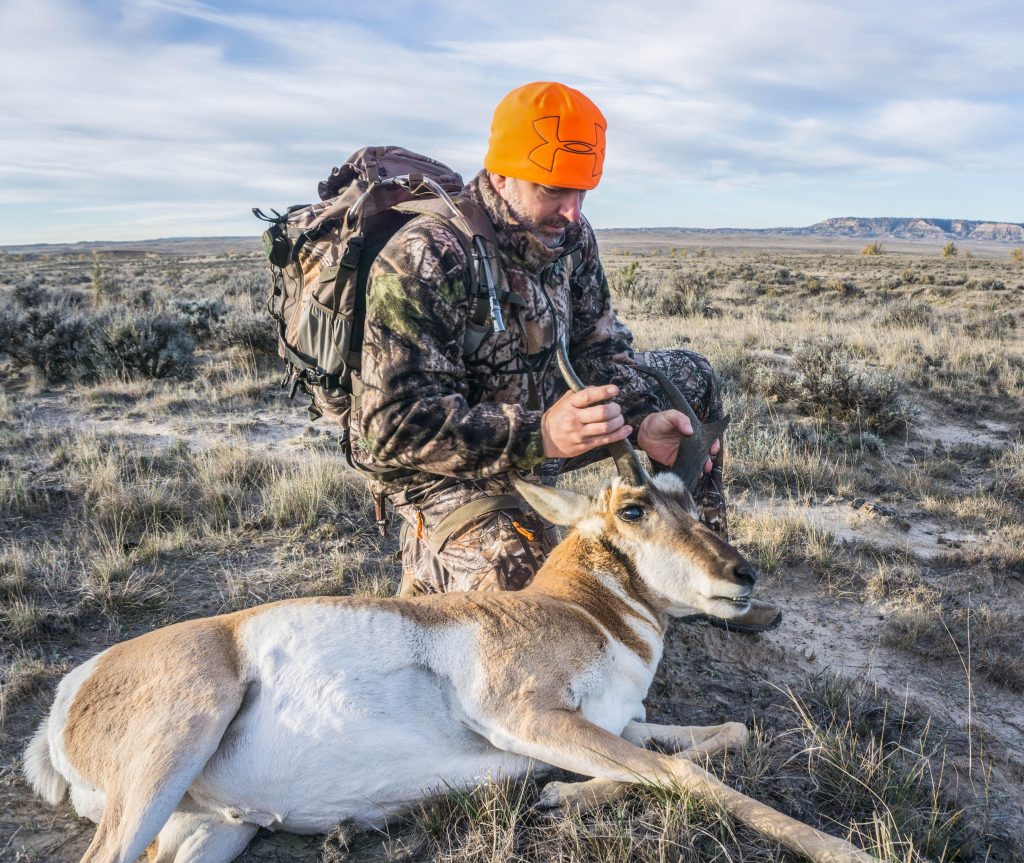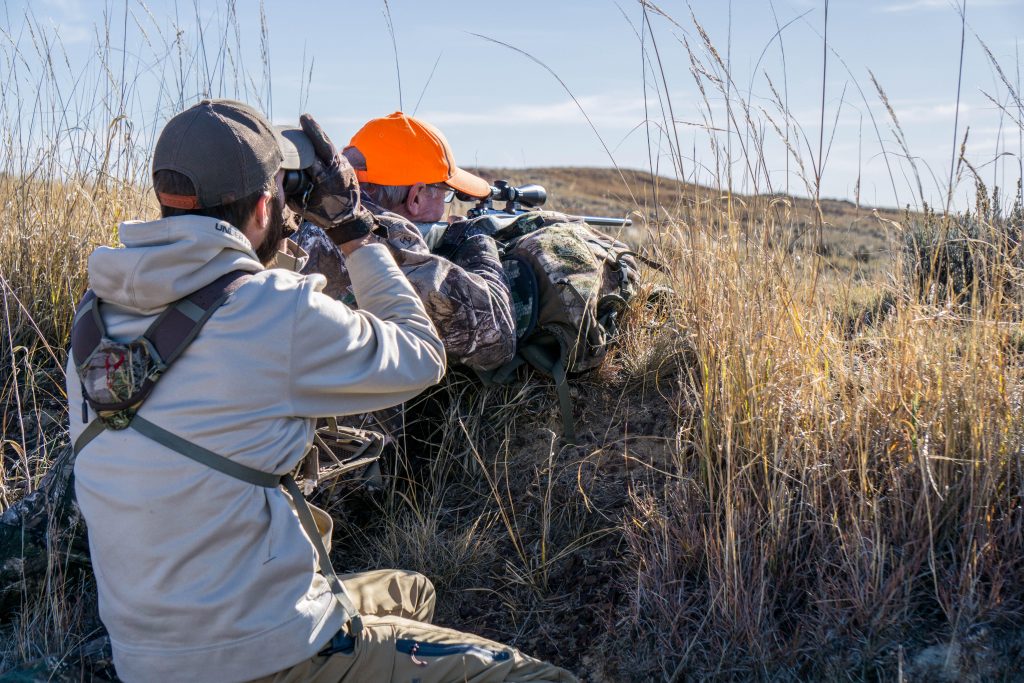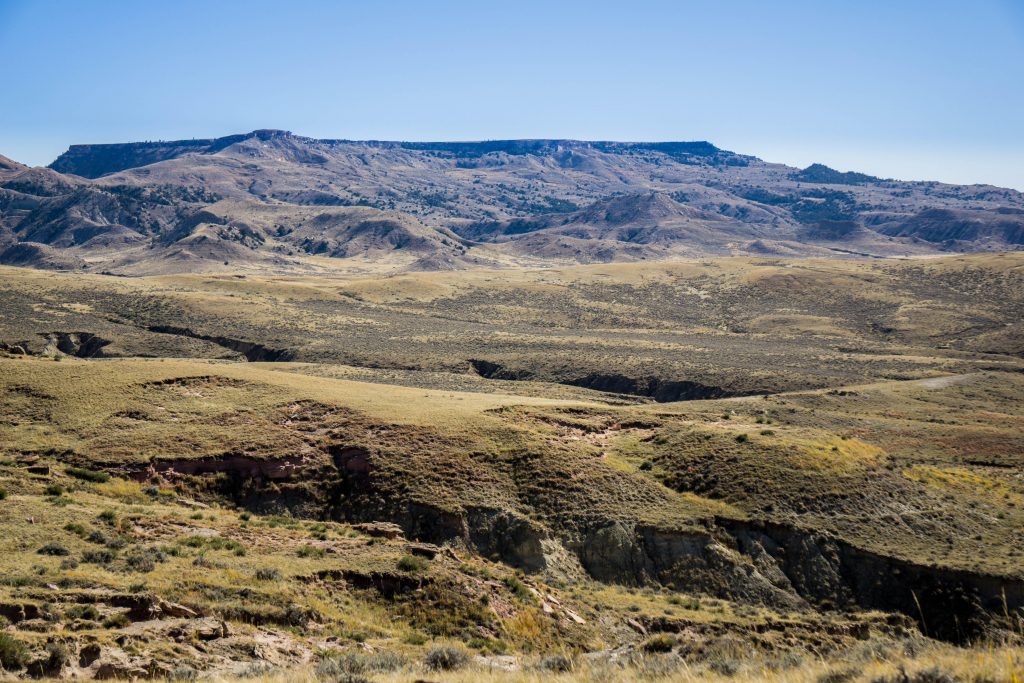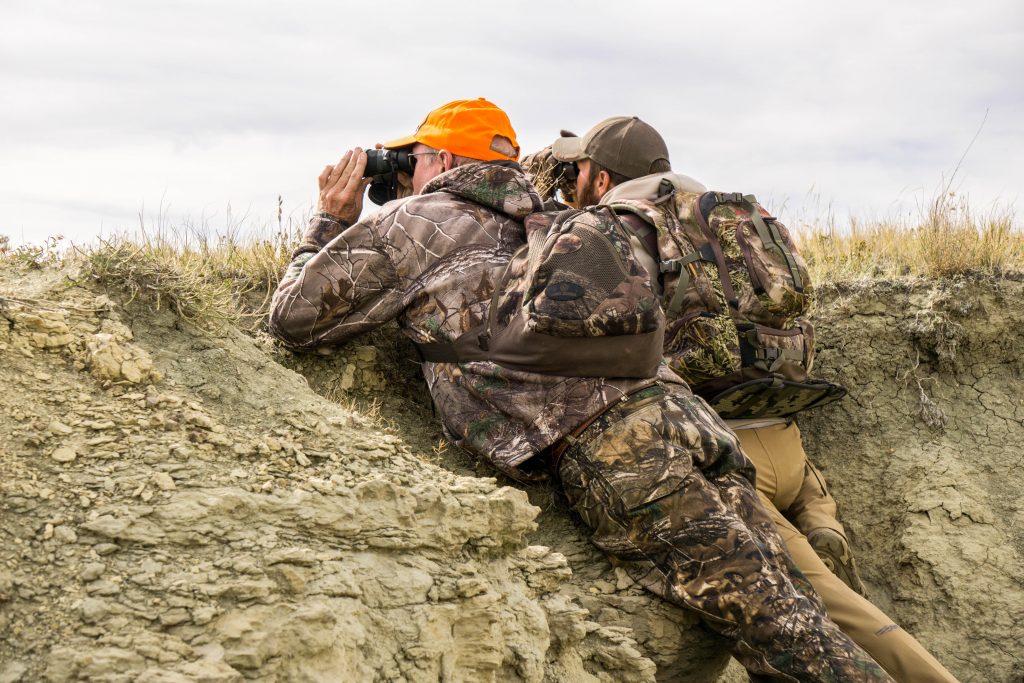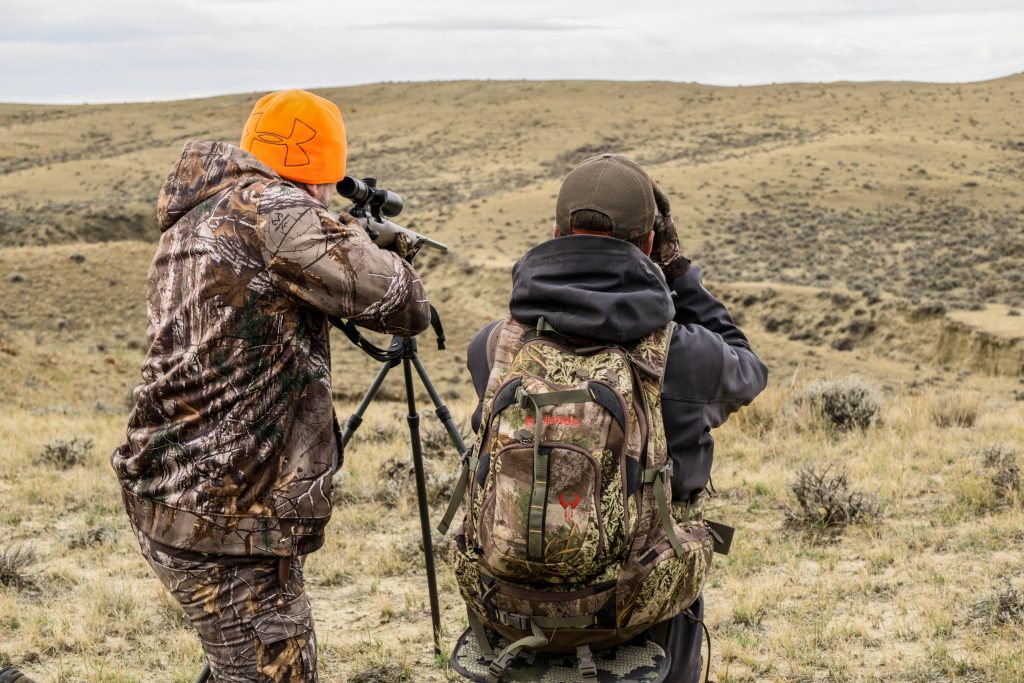Antelope Hunting Basics: What to Expect on a Pronghorn Hunt
If you’re new to hunting antelope, you’ll find some challenges totally unique to this species. In fact taxonomically, they are not related to anything else in the world. Not a true antelope and not related to other deer species like elk or moose, the American pronghorn is one of a kind.
Antelope are perhaps best known for their excellent vision. They live in wide-open country, where they rely on their vision and speed for safety. Approaching them in areas with very little cover creates a serious challenge for hunters
We’ve asked our guides for their best antelope hunting tips and they offered some great advice. If you’re planning to hunt antelope with us at SNS Outfitter and Guides, or if you’re new to antelope hunting in general, here are a few tips and what you can expect.
1. Antelope Rely on their Vision
The greatest challenge to getting within shooting range of an antelope is staying out of sight.
An antelope’s best defenses are not the same as other western big game animals. An antelope has eyesight and speed. Those are the defenses they rely on.
Hearing and smell are often secondary when it comes to antelope hunting. You can often stalk antelope with the wind at your back and still be successful. And you can make noise unlike you could with an elk or a deer. But if they catch you moving, even at long distances, you’re likely to get busted.
2. Take the Time to Plan Your Approach
One of the most important factors in antelope hunting is staying out of their line of sight. It is important to carefully plan your approach, and make a stalk that will put you within shooting range.
At first glance, the terrain may look featureless.
But even shallow ravines and low rolling draws can provide enough cover.
Use anything you can to get within range. Sometimes, you may have to crawl on your hands and knees to close the distance.
3. Practice With Your Rifle
Getting close to antelope can be difficult. It’s not uncommon to have to make shots between 200 and 300 yards. And remember that an antelope doesn’t present a very large target. Before your antelope hunt, spend plenty of time practicing with your rifle in realistic hunting positions, not from a bench.
Don’t wait until the week before your hunt. Begin practicing with your rifle now and be extremely comfortable with its performance out to 300 yards. You want to feel confident and prepared when you finally get that opportunity at a great trophy.
4. Don’t Lose Hope When You Blow a Stalk
If you hunt antelope long enough, you’ll certainly experience a blown stalk. When it happens, don’t give up on the buck. Your chance may not be over. Antelope can run more than 55 miles per hour and they cover a lot of ground in a short amount of time. But chances are, when he goes over the next hill, you can hit the reset button. For an antelope, out of sight is out of mind.
After a long, hard stalk gets blown, it’s easy to feel a big letdown. It was a lot of work and it can be hard to stay motivated. But stay focused and determined. Persistence definitely pays off when in pursuit of a mature antelope buck.


